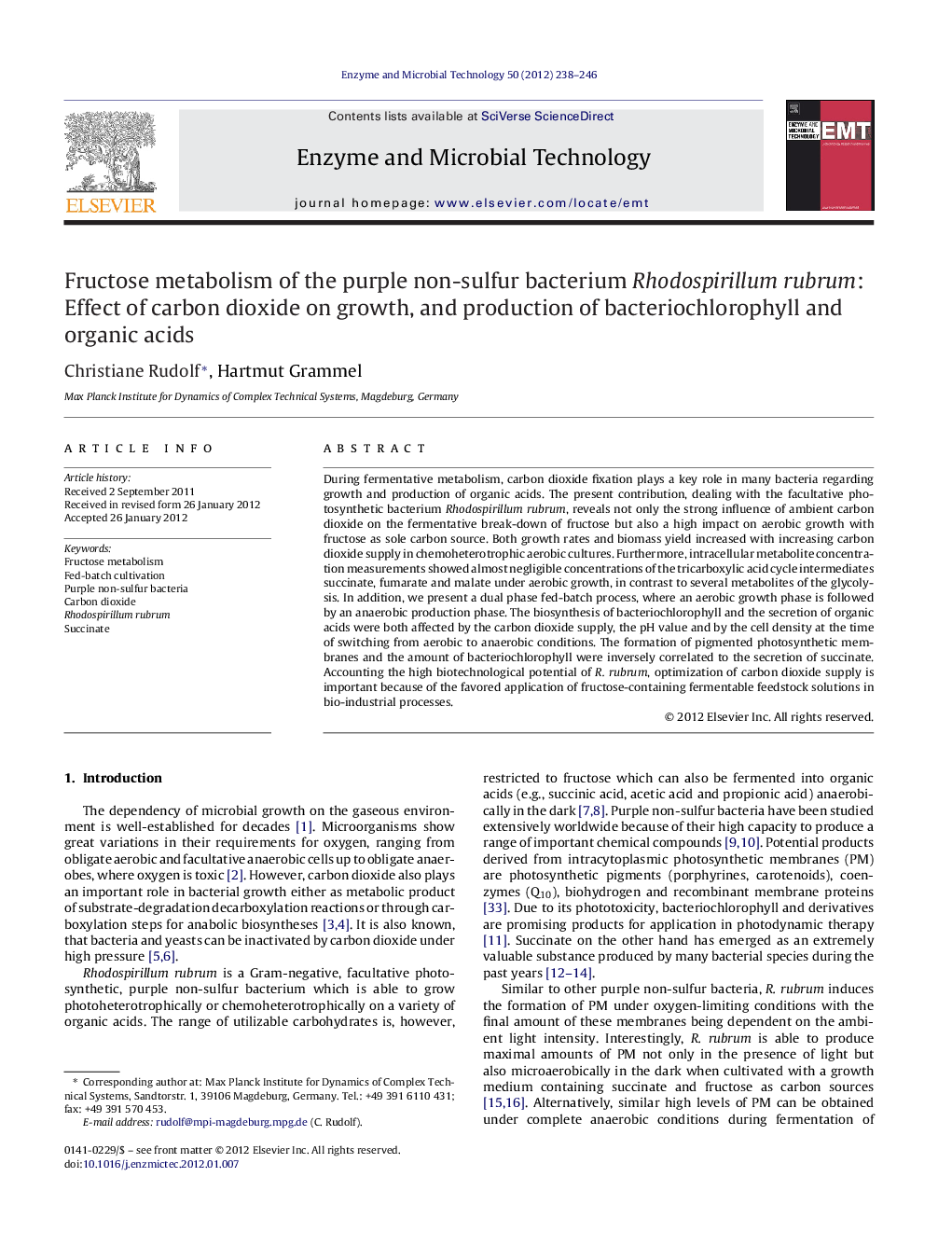| Article ID | Journal | Published Year | Pages | File Type |
|---|---|---|---|---|
| 17263 | Enzyme and Microbial Technology | 2012 | 9 Pages |
During fermentative metabolism, carbon dioxide fixation plays a key role in many bacteria regarding growth and production of organic acids. The present contribution, dealing with the facultative photosynthetic bacterium Rhodospirillum rubrum, reveals not only the strong influence of ambient carbon dioxide on the fermentative break-down of fructose but also a high impact on aerobic growth with fructose as sole carbon source. Both growth rates and biomass yield increased with increasing carbon dioxide supply in chemoheterotrophic aerobic cultures. Furthermore, intracellular metabolite concentration measurements showed almost negligible concentrations of the tricarboxylic acid cycle intermediates succinate, fumarate and malate under aerobic growth, in contrast to several metabolites of the glycolysis. In addition, we present a dual phase fed-batch process, where an aerobic growth phase is followed by an anaerobic production phase. The biosynthesis of bacteriochlorophyll and the secretion of organic acids were both affected by the carbon dioxide supply, the pH value and by the cell density at the time of switching from aerobic to anaerobic conditions. The formation of pigmented photosynthetic membranes and the amount of bacteriochlorophyll were inversely correlated to the secretion of succinate. Accounting the high biotechnological potential of R. rubrum, optimization of carbon dioxide supply is important because of the favored application of fructose-containing fermentable feedstock solutions in bio-industrial processes.
► CO2 is required for growth of Rhodospirillum rubrum with fructose as sole carbon source. ► Intracellular metabolites showed typic profiles for different oxygen amounts. ► A dual phase aerobic/anaerobic fed-batch process for R. rubrum has been developed. ► The bacteriochlorophyll and succinate production were inversely correlated. ► The maximal succinate concentration reached in the culture fluid was 286 mM.
